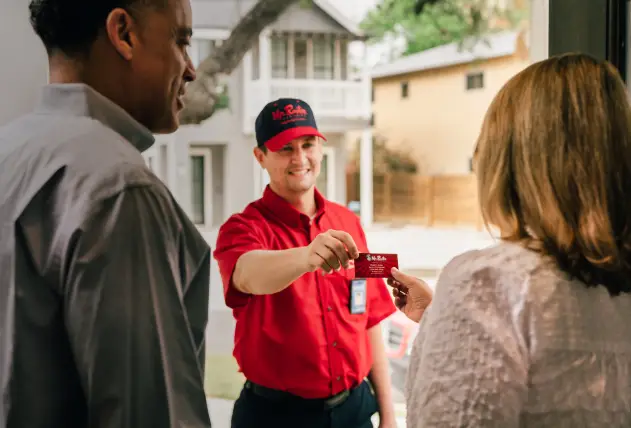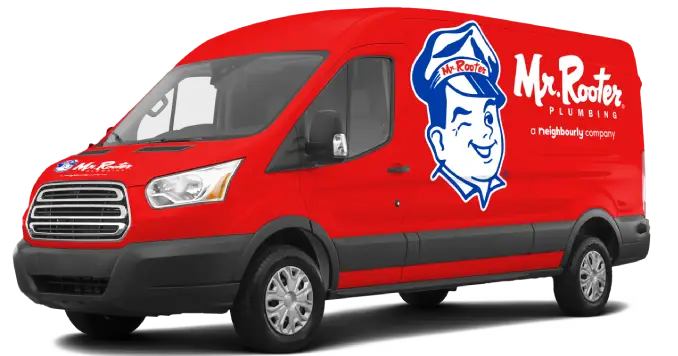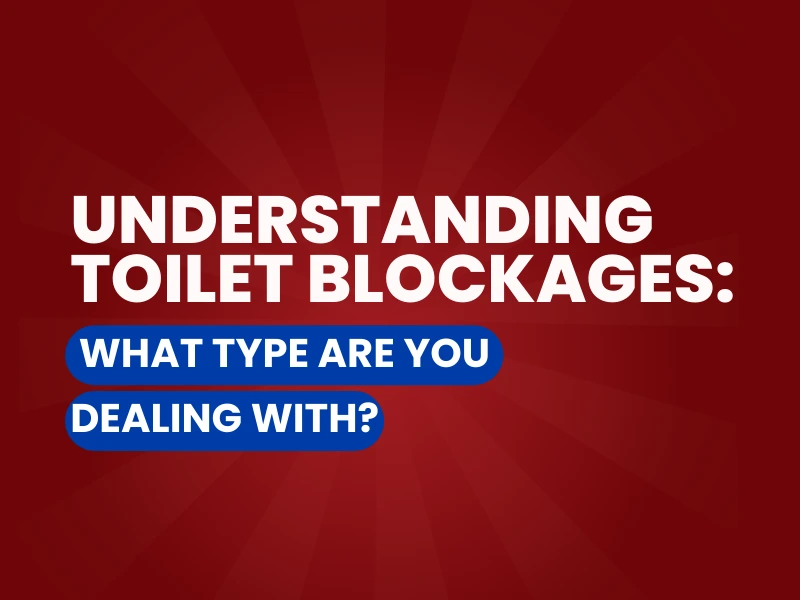
Ever flushed your toilet only to watch the water rise - or found it drains painfully slow, then suddenly backs up for no reason at all? If so, you're likely to be dealing with toilet blockage.
Toilet clogs are one of the most common plumbing problems homeowners face, and they always seem to happen at the worst possible time. But here's the catch: not all toilet blockages are created equal. Some are simple fixes, while others can be signs of deeper plumbing problems.
The secret to resolving the problem fast and avoiding damage or costly repairs is understanding what type of blockage you're actually dealing with.
Why Identifying the Blockage Type Matters
Before you grab a plunger, auger, or chemical cleaner, stop and assess the situation. Treating a slow drain as if it were a complete blockage can make things worse. You could also waste hours trying to fix an intermittent issue that requires a more technical solution - like vent stack cleaning or a camera inspection.
"It's not just about what the blockage is. It's about where it is," says Curtis McGrath, a seasoned plumber. A correct diagnosis ensures you don't damage the system with guesswork; the blockage is properly and permanently resolved, and you ultimately save time, effort, and money.
Complete Blockage
A complete blockage means your toilet is not draining at all. When you flush, the water either rises dangerously high or stays put.
Common causes of complete toilet blockages include too much toilet paper, sanitary products, baby wipes, or small objects accidentally flushed. Sometimes, the issue is more serious and rooted deeper in your home's sewer line. This type of blockage often requires immediate attention from a professional plumber.
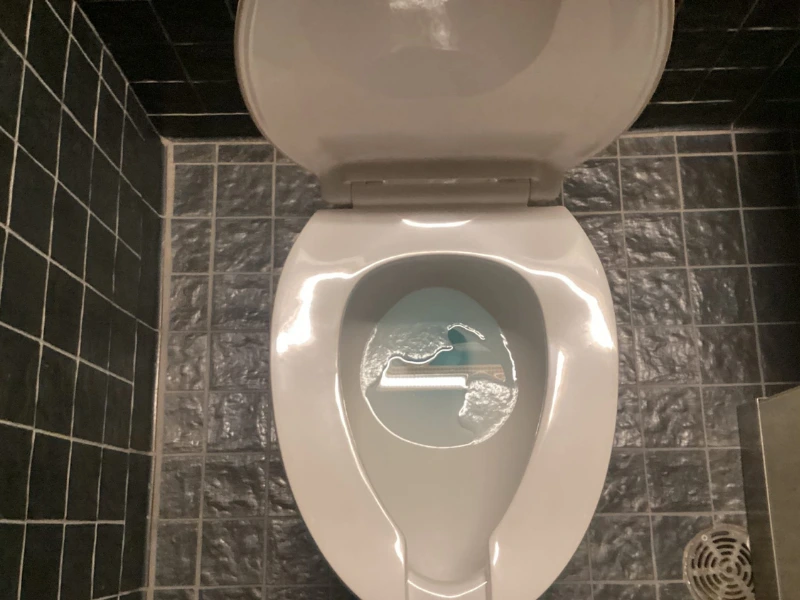
Slow-Draining Toilet
A slow drain means your toilet is flushing, but the water takes longer than usual to empty. The bowl might not clear completely, or you may need to flush twice. These slow drains are typically caused by a foreign object, or hard water scale that gradually narrows the flow path.
While a slow-draining toilet may not need an immediate repair, ignoring it can lead to a complete blockage - and a much bigger plumbing problem.

Intermittent Blockage
Intermittent blockages are especially frustrating. Sometimes, your toilet flushes just fine; other times, it backs up or drains slowly. There is no consistent pattern, which makes it difficult to pinpoint the root cause.
As Ryan Sherrer, a professional plumber, shares, "If the blockage’s not happening when we're there to check, it's hard to know what's going on."
These blockages are often the result of shifting debris, blocked vent stacks affecting air pressure, or poorly sloped pipes. They may also indicate a mechanical issue with the toilet itself, not necessarily a clog. And because intermittent clogs come and go, many homeowners dismiss them - until they become permanent.
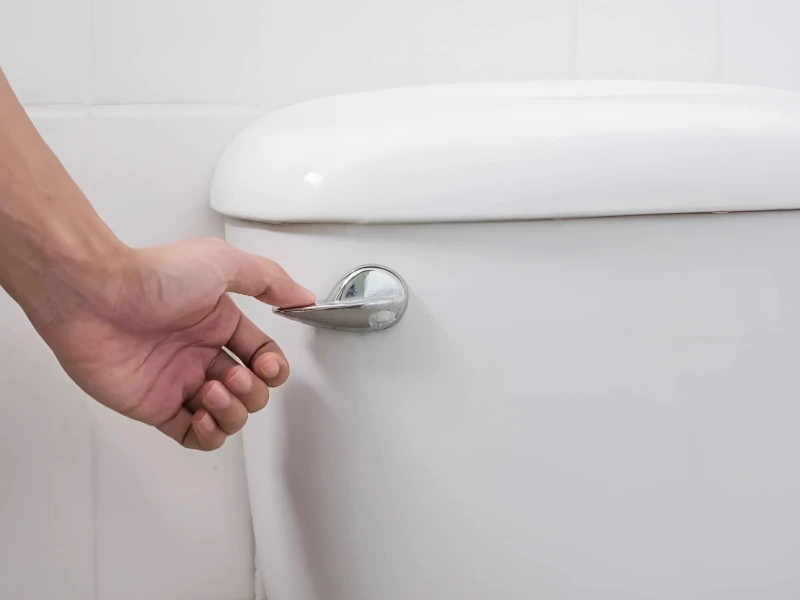
Types of Toilet Clogs: A Side-by-Side Comparison
To help you better understand the differences between the three main types of toilet blockages, we've outlined their key symptoms, causes, and risks. This quick comparison can help you identify what you're dealing with - and whether it's time to call a licensed plumber.
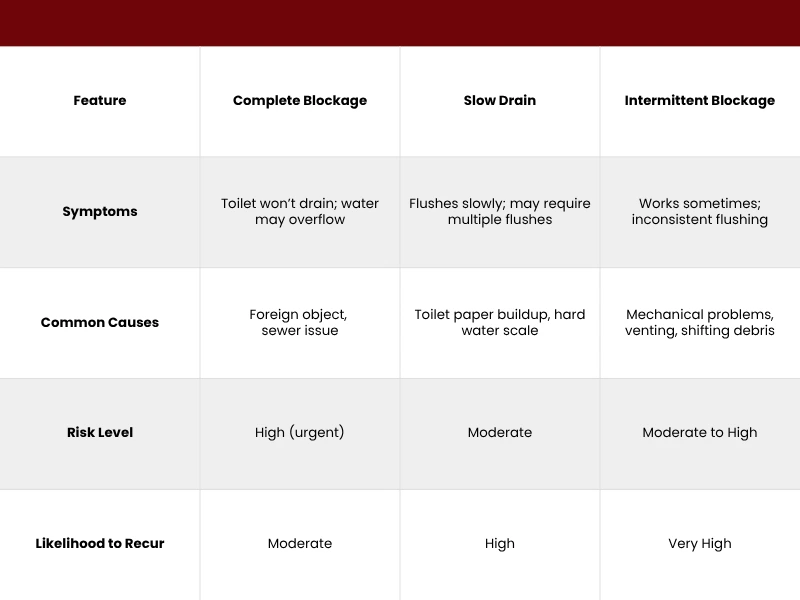
DIY Risks You Might Miss
Many homeowners try to tackle blockages themselves. Some methods can be helpful, while others are not. Here’s what to know before attempting any DIY solution:
Plunger
A plunger is the go-to first move. It’s great for soft blockages or toilet paper clogs near the top of the trap. But if the clog is deeper or more solid, using a plunger can cause more harm than good.
“If it’s a foreign object, you risk pushing it deeper,” warns Ryan Sherrer, a professional plumber. Likewise, Curtis McGrath, a 23-year seasoned plumber, adds, “If you’re using too much force with older plumbing, you could break the wax seal or even crack the toilet.” So, if you’re plunging repeatedly without progress, it’s a sign the blockage is beyond the reach of this tool.
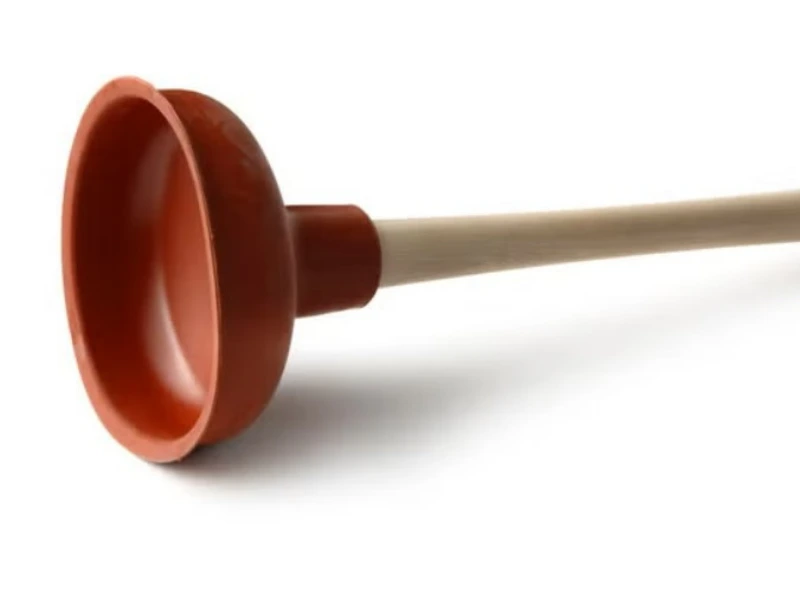
Toilet Auger
Toilet augers are more effective for deep or stubborn clogs. They can reach into the trap and pass it, helping to break up material or hook out objects - but it’s not without risks.
“There’s a risk of scratching the toilet bowl or damaging the toilet if you’re not careful,” says Ryan Sherrer, a veteran plumber. Also, augers won’t help much if the issue is related to venting problems or a malfunctioning internal toilet component.
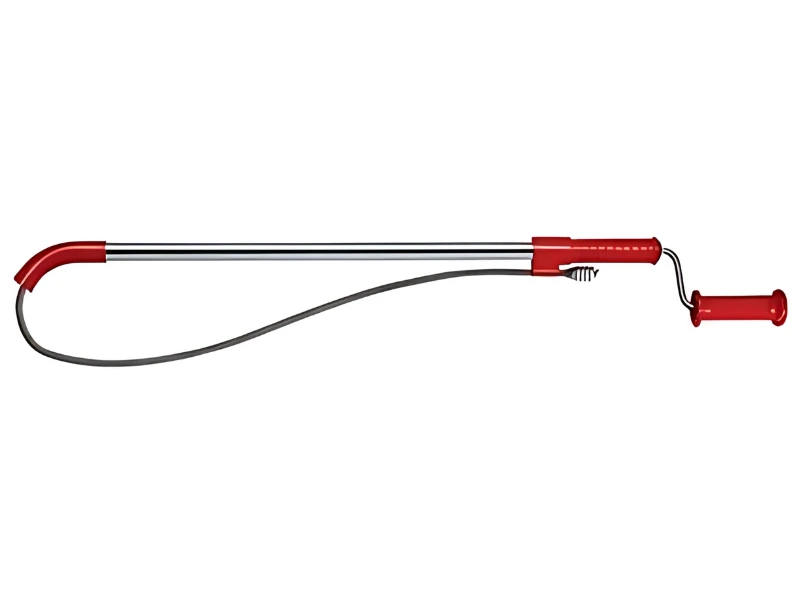
Chemical Cleaners
Chemical cleaners may promise fast results, but they often cause more harm than good. “I’ve seen them damage the surface of the toilet,” says Curtis McGrath, a professional plumber.
More so, some chemicals can even cause pressure to build up inside the toilet. They’re also dangerous to touch and don’t work on things like plastic, toys, or wipes. In most cases, it’s better to skip the chemicals and call a licensed plumber.
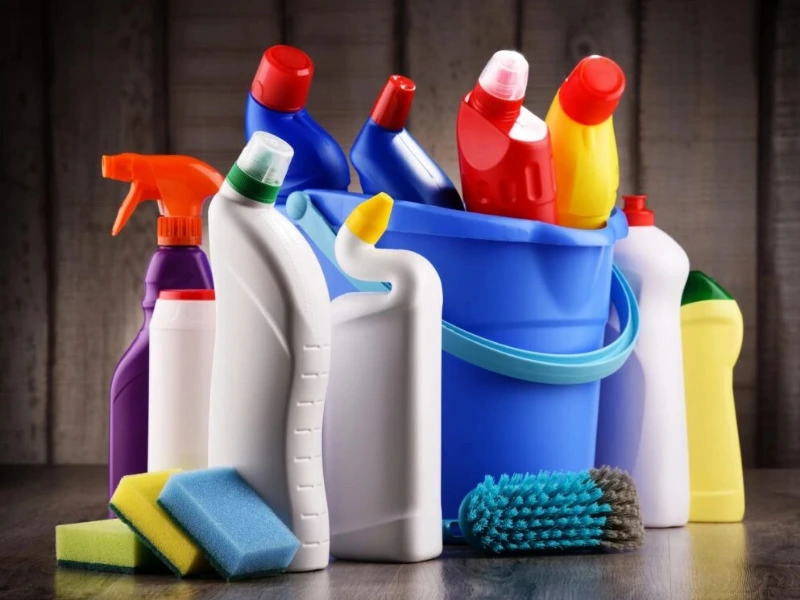
Does Your Home’s Plumbing Age Matter?
Yes, very much. Older pipes, such as those made of cast iron, can become rough on the inside. That makes it easier for waste and paper to get stuck. In contrast, newer homes with plastic (PVC) pipes don’t clog as easily, but problems can still happen if things get flushed that shouldn’t.
Thus, it’s essential to understand your home’s plumbing system to prevent future blockages and know when to call a plumber.
Stop Guessing, Start Flushing
If you’re dealing with a clogged toilet in Ottawa, the safest and fastest solution is to call in the pros.
At Mr. Rooter Plumbing of Ottawa, we combine expert diagnosis with top-tier equipment to solve even the most frustrating toilet blockages. Our licensed plumbers are available 24/7 to keep your plumbing flowing - and your stress level down.
Call Mr. Rooter Plumbing of Ottawa Today
Contact us today at https://www.mrrooter.ca/ottawa/ to schedule a service. Don’t let a minor blockage turn into a major disaster.
